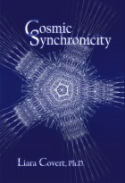Angel currency to amulets
 Monday, March 12, 2007 at 11:22PM
Monday, March 12, 2007 at 11:22PM An angel is the name of an English gold coin issued from 1460 to 1643, bearing on its obverse a figure of the archangel Michael killing a dragon. First minted in 1461 during the reign of Edward IV, it had a value of six shillings and eight pence. By 1526, during the second coinage of Henry VIII, its value was raised to seven shillings and six pence. Later, in 1544, it was worth eight shillings. By 1547, this coin’s value had reached ten shillings, in part due to extravagant spending habits of Henry VIII and an early example of inflation. It remained a ten shilling gold coin until production ceased in 1643 during the reign of Charles I.
The angel is a fascinating historic coin. It evolved from having market exchange value to hang round the neck of a patient who was touched for the king's ovil. Angels were no longer struck after the Restoration. When they went out of currency, small golden medallions, resembling them in style, were created to replace them as amulets, and these went by the name of "touch pieces." They continued to have the reputation of protection with an ability to ward off bad spirits.










Reader Comments